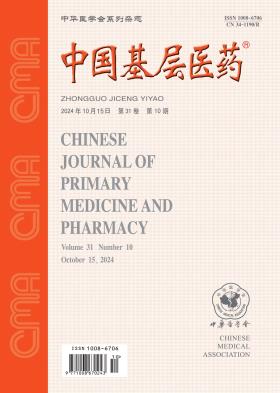Characteristics and treatment of methadone maintenance therapy in Pingdingshan city, Henan province
引用次数: 0
Abstract
目的 了解平顶山市参加美沙酮维持治疗(MMT)人群的基本特征、治疗依从性以及脱失原因,为提高门诊治疗效率提供依据。 方法 统计平顶山市疾病预防控制中心药物维持治疗中心2017年12月以来首次入组的阿片类物质成瘾者信息,对其人口学特征、既往毒品使用情况和MMT治疗情况进行描述性分析,并用回归模型分析维持率的影响因素。 结果 首次入组MMT的鸦片或海洛因成瘾者共141例。男女比例为3.86∶1;年龄(43.96±8.05)岁;未婚、离异或丧偶82例,占58.16%;初中及以下文化程度94例,占66.67%;初次吸毒年龄为(25.06±6.34)岁;吸毒时间(9.07±6.48)年,最短5个月,最长27年;单纯使用阿片类者134例,占95.04%;曾有毒品注射行为者26例,占18.44%。治疗期间平均服药剂量为(69.54±25.07)mL。MMT维持率为40.43%(57/141)。MMT维持率在文化程度高、居住地离门诊近、交通方便、吸毒时间长、日均服药剂量大的患者中较高。 结论 平顶山市MMT患者以男性、非在婚状态者、初中及以下文化程度者为主,与其他地区一致。提高维持率需增设服务延伸点,应关注低文化、吸毒时间短、服药剂量小的人群。河南省平顶山市美沙酮维持治疗特点及治疗
Objective: To understand the basic characteristics, treatment compliance, and reasons for loss of methadone maintenance therapy (MMT) among the population in Pingdingshan City, and to provide a basis for improving outpatient treatment efficiency. Method: Statistical analysis was conducted on the information of opioid addicts who were first enrolled in the Drug Maintenance Treatment Center of the Center for Disease Control and Prevention in Pingdingshan City since December 2017. Descriptive analysis was conducted on their demographic characteristics, past drug use, and MMT treatment. Regression models were used to analyze the influencing factors of maintenance rates. A total of 141 opium or heroin addicts were enrolled in MMT for the first time. The male to female ratio is 3.86:1; Age (43.96 ± 8.05) years old; 82 cases were unmarried, divorced or widowed, accounting for 58.16%; 94 cases with education level of junior high school or below, accounting for 66.67%; The age of initial drug use is (25.06 ± 6.34) years old; The duration of drug use is (9.07 ± 6.48) years, with a minimum of 5 months and a maximum of 27 years; 134 cases (95.04%) used opioids alone; There were 26 cases of drug injection behavior, accounting for 18.44%. The average medication dose during the treatment period was (69.54 ± 25.07) mL. The MMT maintenance rate was 40.43% (57/141). The maintenance rate of MMT is higher among patients with high education level, close residence to the outpatient clinic, convenient transportation, long drug use time, and high daily medication dosage. Conclusion: MMT patients in Pingdingshan City are mainly male, unmarried, and those with a junior high school or lower education level, which is consistent with other regions. To increase the maintenance rate, additional service extension points should be added, and attention should be paid to the population with low education, short drug use time, and low medication dosage.
本文章由计算机程序翻译,如有差异,请以英文原文为准。
求助全文
约1分钟内获得全文
求助全文
来源期刊
CiteScore
0.10
自引率
0.00%
发文量
32251
期刊介绍:
Since its inception, the journal "Chinese Primary Medicine" has adhered to the development strategy of "based in China, serving the grassroots, and facing the world" as its publishing concept, reporting a large amount of the latest medical information at home and abroad, prospering the academic field of primary medicine, and is praised by readers as a medical encyclopedia that updates knowledge. It is a core journal in China's medical and health field, and its influence index (CI) ranks Q2 in China's academic journals in 2022. It was included in the American Chemical Abstracts in 2008, the World Health Organization Western Pacific Regional Medical Index (WPRIM) in 2009, and the Japan Science and Technology Agency Database (JST) and Scopus Database in 2018, and was included in the Wanfang Data-China Digital Journal Group and the China Academic Journal Comprehensive Evaluation Database.

 求助内容:
求助内容: 应助结果提醒方式:
应助结果提醒方式:


